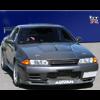Announcements
-
Similar Content
-
Latest Posts
-
By Doug 98 R34 GTT · Posted
New R34 owned here (from the US) and found a gem, '98 GTT with ~6k miles, super clean & completely stock. When shifting there's no grinding, shifts smooth, etc. The concern I have are 2 things: 1) Only in 2nd and 3rd... when maintaining a slower speed (in traffic as an example) as I let off/on the gas, the shifter will slightly move and vibrate. If the clutch is engaged, none of this happens. It's not bad, but enough to feel like something isn't necessarily right. 2) This mainly happen in 4th or 5th... the shifter slightly bounces up and down, almost like it's riding on unbalanced tires (and I do think the tires are unbalanced as I get a little of that bounce feel at higher speeds, which is maybe why it only happens in 4th/5th). Lastly, and sorry for this noob question but I want to work on this car myself, can someone teach me some on these manual transmissions? Like servicing them, best products to use, etc.; would be greatly appreciated. Thanks!! -
Coilovers aren't even the first step. Bushes, subframe position and alignment, HICAS elimination, adjustable upper arms and traction arms in order to dial out understeer. All these things need/deserve attention first. ARBs (There's no such thing as a swaybar. Please, everybody, stop calling them that) are useful if you want to limit spring stiffness. Otherwise you can control body roll with springs. Spring and damper rates are a function of road surface, speed and usage. There is no solution that works for all cases.
-
Define "nothing". Is the starter spinning but not the engine? Engine turning but not firing? If the engine is turning but not firing, then you are missing either fuel or spark. You need to find whichever has gone missing.
-
By Dose Pipe Sutututu · Posted
Shitbox Tiguan updates, got the APR OTS tune put back on (no charge for it to be removed/added back), didn't want to just come in just for that (not a fan of wasting people's time for nothing) so I purchased an APR dog bone insert. The boys at German Performance Garage said they would fit it for free too since they had 1x hoist free. Now that's service you don't normally get from most workshops. Anyhow, tune back on, snow grate pulled out, dog bone insert back in and not going to lie, a few smiles when I nailed it around the industrial area heading back onto the M7. Amayama also said 1 to 2.5 month wait for the RB25DE heater hose, yeah why not, car has been off the road for nearly 3, what's a other 2.5? -
By Murray_Calavera · Posted
Hmm I'm going to approach this from the other side... What is the car doing that you don't like or what would you like the car to do that is currently isn't doing (handling wise that is)
-




Recommended Posts
Create an account or sign in to comment
You need to be a member in order to leave a comment
Create an account
Sign up for a new account in our community. It's easy!
Register a new accountSign in
Already have an account? Sign in here.
Sign In Now